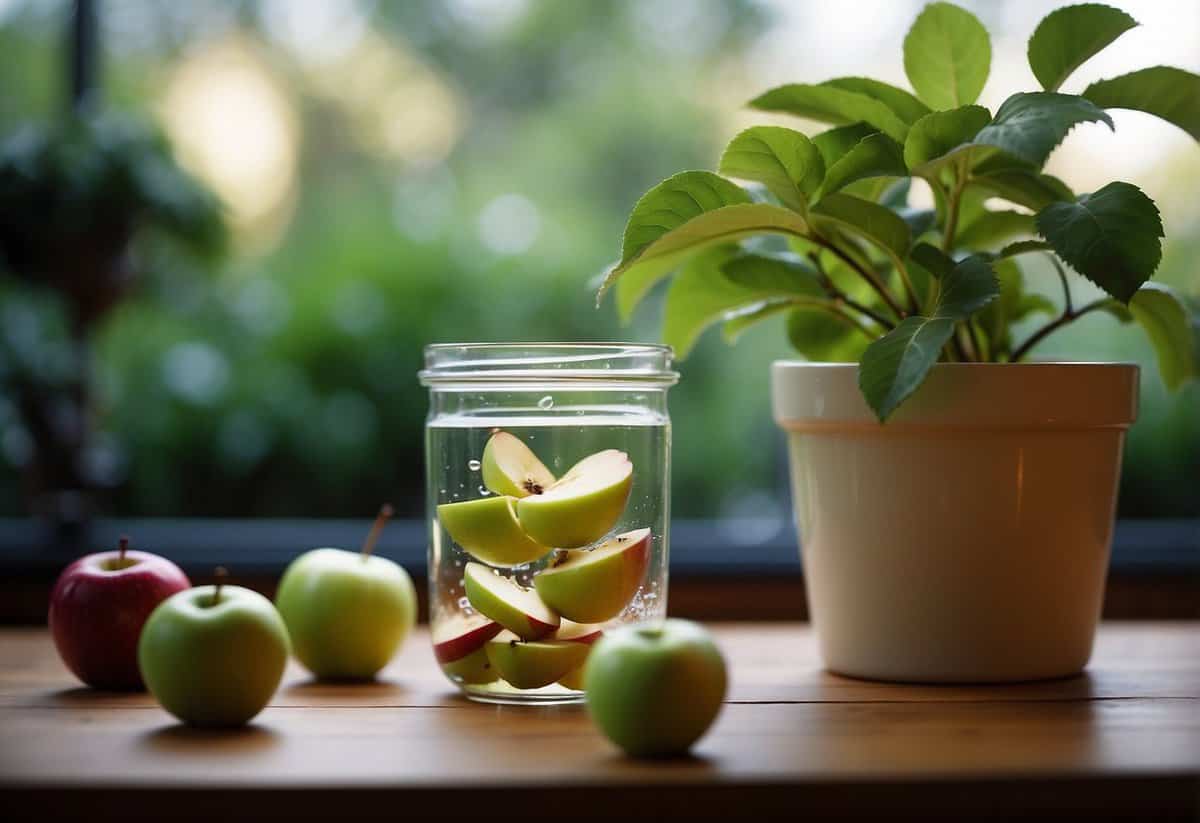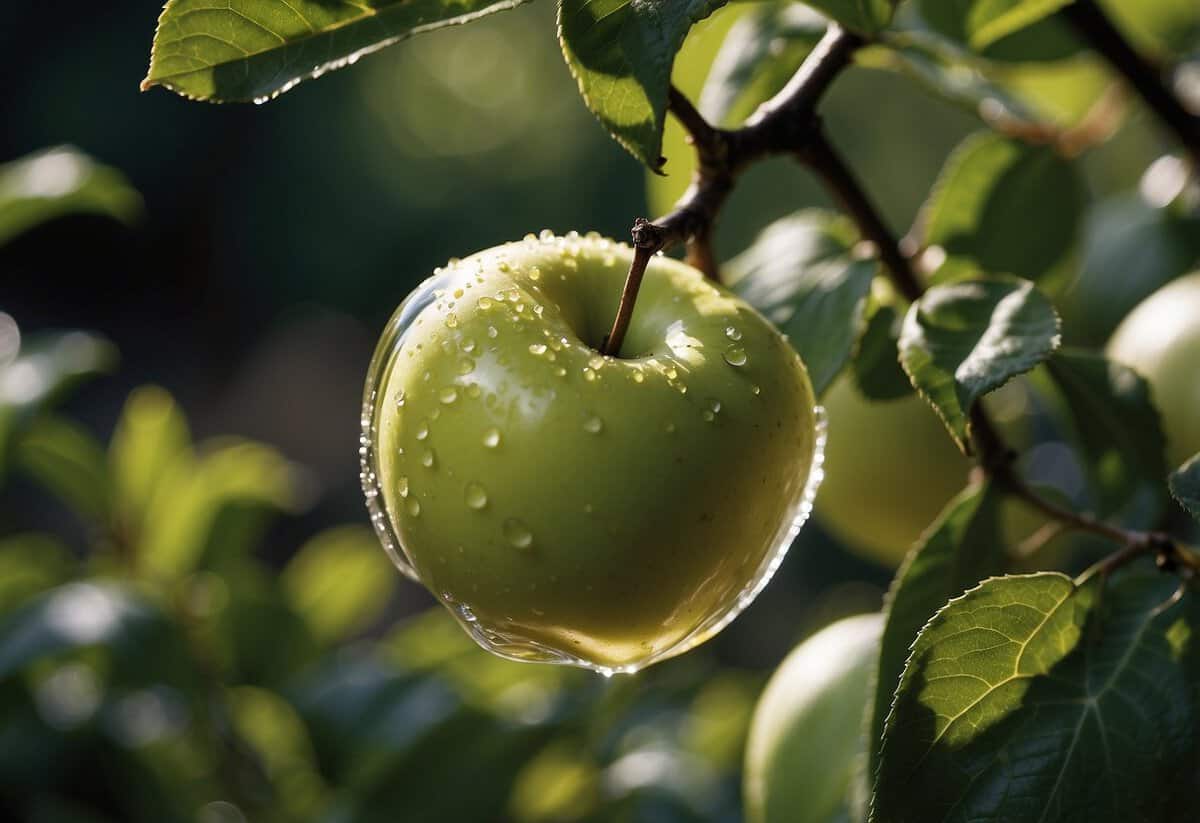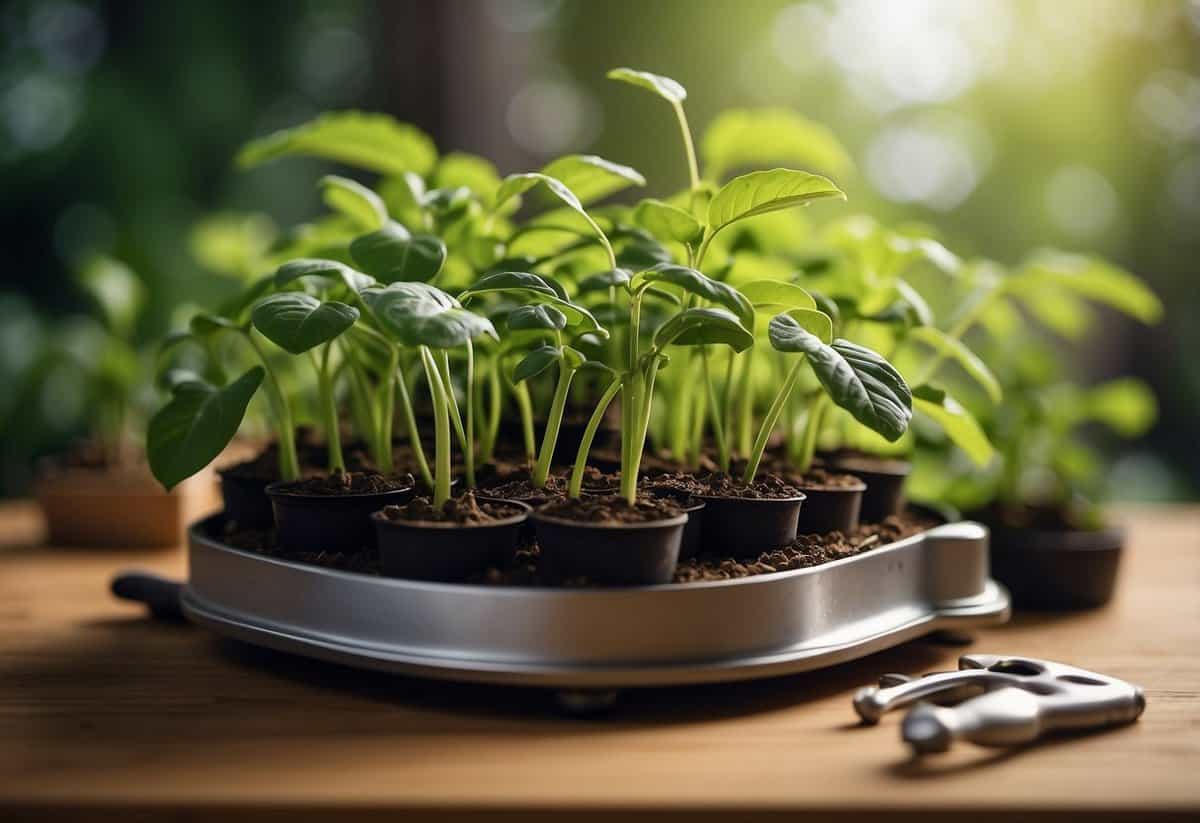Is Apple Peel Water Good for Plants? Discover the Benefits
Thinking about what to do with those leftover apple peels? Instead of tossing them, why not use them to benefit your garden? Apple peel water is a fantastic, eco-friendly way to give your plants a nutrient boost.

Apple peels are packed with essential vitamins and minerals that can help your plants thrive. Potassium, vitamin A, vitamin C, and calcium are all found in apple peels and can improve soil fertility. By using apple peel water, you create a sustainable, organic fertilizer that supports healthy plant growth.
Making apple peel water is simple. Collect your apple peels, crush them in a grinder, and mix with water before applying to your plants once every six to eight weeks. This method not only helps reduce waste but also ensures that your garden stays lush and vibrant. Want to learn more? Dive deeper into the benefits and process to see how you can make the most of those apple peels for your garden.
Benefits of Apple Peel Water for Plants

Apple peel water provides valuable nutrients, is eco-friendly, and helps save money on gardening supplies.
Natural Source of Nutrients
Apple peels are packed with important nutrients like potassium, calcium, nitrogen, phosphorus, and magnesium. These nutrients help your plants grow stronger and healthier. For example, potassium supports the growth and strength of stems and roots. Calcium is crucial for building cell walls, leading to more resilient plants. Nitrogen is a key component in chlorophyll, which helps plants with photosynthesis. By using apple peel water, you can provide an organic fertilizer to your plants, boosting their overall health naturally.
Eco-Friendly and Sustainable
Using apple peel water is an eco-friendly and sustainable gardening practice. Instead of throwing out apple peels, you repurpose them into a natural fertilizer, reducing food waste. This method helps you minimize your carbon footprint and supports a more sustainable lifestyle. You avoid using chemical fertilizers, which can harm the environment and local water supplies. By choosing apple peel water, you contribute to a healthier planet while taking care of your garden.
Cost-Effective Gardening
Making apple peel water is a cost-effective way to improve your garden. Since you use apple peels and water, this method comes at little to no extra cost. Store-bought fertilizers can be pricey, especially if you have a large garden. By using apple peel water, you save money that you can use for other gardening needs. It’s a simple and effective alternative to commercial fertilizers, helping you maintain a thriving garden without breaking the bank.
Preparing Apple Peel Water

Creating apple peel water is a simple way to repurpose kitchen scraps. This method not only reduces waste but also provides a nutritious boost for your plants.
Collecting and Storing Apple Peels
Start by saving the peels from apples you eat or use in recipes. Be sure to wash the apples thoroughly before peeling to remove any pesticides or wax.
Store the collected peels in a clean container. If you don’t have enough peels for a batch right away, you can keep them in the fridge for a few days. For longer storage, freeze the peels in an airtight bag to prevent them from spoiling.
Creating the Fertilizer Tea
Once you have enough peels, it’s time to make your apple peel tea. Place the peels in a large container and add water at a 1:2 ratio (one part peels to two parts water). Let this mixture sit in a shaded area for three to five days.
During this period, the peels will start to decompose and release nutrients into the water. Stir the mixture daily to help the process. After the water has brewed, strain out the peels and dilute the liquid with an equal amount of water.
Your apple peel tea is now ready to use. Pour it around the base of your plants to help nourish their growth.
Using Apple Peel Water in Your Garden

Apple peel water can be a great natural fertilizer for your plants, providing essential nutrients. Here’s how to properly dilute and apply it, as well as the best times for fertilization.
Dilution and Application Techniques
To make apple peel water, start by brewing your apple peels for several days. This process breaks down the fruit, releasing beneficial nutrients like potassium and calcium into the water. After brewing, strain the mixture to remove any solid pieces.
For best results, dilute the apple peel water with an equal amount of clean water. This is a 1:1 ratio. This ensures that the nutrient concentration is appropriate for your plants and reduces any risk of over-fertilization.
When applying the diluted solution, you can use a watering can to drench the soil around your plants or a spray bottle for a foliar spray. If using a foliar spray, be sure to coat the leaves lightly and evenly. Apply the solution in the early morning or late afternoon to avoid midday sun, which can cause leaf burn when combined with the moisture.
Best Times for Fertilization
Timing is crucial for effective fertilization. Apply apple peel water to your garden every 6-8 weeks during the growing season. This is when plants are actively absorbing nutrients and can benefit the most from the extra boost.
In the spring, as plants begin to grow, is an ideal time for the first application. Summer applications can help maintain growth and health during the peak growing season. As fall approaches, a final application can prepare your plants for the winter ahead.
Avoid fertilizing during the winter months, as most plants are dormant and won’t benefit from the added nutrients. Always observe your plants and adjust your schedule based on their specific needs and growth patterns.
Complementary Organic Additives

Using apple peel water can be beneficial for your plants, but combining it with other organic materials can improve your garden even more. Mixing different types of compost, fruit peels, and kitchen scraps can boost the soil’s health and fertility.
Combining with Other Organic Materials
When you’re using apple peel water for your plants, consider adding other items like banana peels and orange peels. These peels provide different nutrients that your plants need. Banana peels, for example, are high in potassium, which helps with flowering and fruit production.
Coffee grounds are another excellent addition. They add nitrogen to the soil, which is ideal for green vegetables and other leafy plants. When mixed together, these materials create a balanced compost that supports various types of crops.
Kitchen scraps such as vegetable peels and leftover greens also make great compost. They decompose quickly and provide essential nutrients. Blending these scraps with apple peel water can speed up the decomposition process, making composting more efficient.
Enhancing Soil Structure and Fertility
Improving soil morphology is crucial for a healthy garden. Apple peel water, along with compost made from fruit peels and kitchen scraps, enhances soil structure. When mixed into the soil, these organic materials improve aeration and water retention, aiding root growth.
Coffee grounds and banana peels contribute to soil fertility by adding vital micronutrients. These elements help vegetable plants and green vegetables grow stronger and healthier. The organic matter from these materials also encourages beneficial microorganisms that break down nutrients, making them more accessible to your plants.
Using diverse organic additives not only nourishes your plants but also creates a sustainable gardening ecosystem. Each material provides unique benefits that, when combined, result in a richer, more fertile soil ideal for various types of plants.
Monitoring Plant Growth and Health

Monitoring the health and growth of your plants helps ensure they receive the right amount of nutrients and can thrive in their environment. Pay close attention to their foliage, flowering, and overall condition to catch any issues early.
Observing Changes in Plants
Watching your plants closely is essential. Look for new leaf growth, which may indicate they are absorbing nutrients effectively. Healthy leaves should be vibrant and green. If you see yellowing or wilting, it might signal a deficiency or overwatering.
Check for flowering, as well. Plants that flower well are generally healthy. Poor flowering could mean they need more nutrients. Keep an eye on the stems and roots too. Sturdy, solid stems and roots often suggest strong plant health.
Regular observation helps you notice if pests or diseases appear. Both can seriously harm plants if not controlled.
Maintaining a Balanced Garden Ecosystem
A balanced garden ecosystem supports plant growth and health. Rotate your crops to prevent soil nutrient depletion. This helps distribute the use of macronutrients like nitrogen, potassium, and phosphorus.
Include a variety of plants in your garden. Different plants use and replenish different micronutrients in the soil. This balance supports a healthier, nutrient-rich environment.
Ensure your soil has good drainage to prevent waterlogging, which can damage roots. Add organic matter to improve soil structure and fertility.
Encourage beneficial insects, such as ladybugs, which can control pests naturally. Creating habitats for these insects helps maintain a healthy garden ecosystem. Regularly composting and mulching can further support soil health and plant growth.







